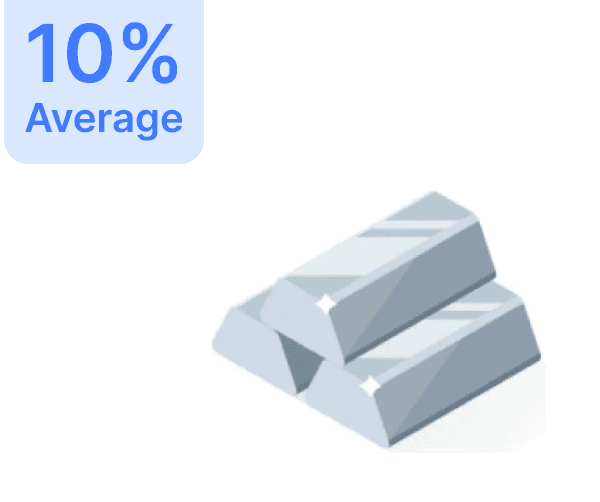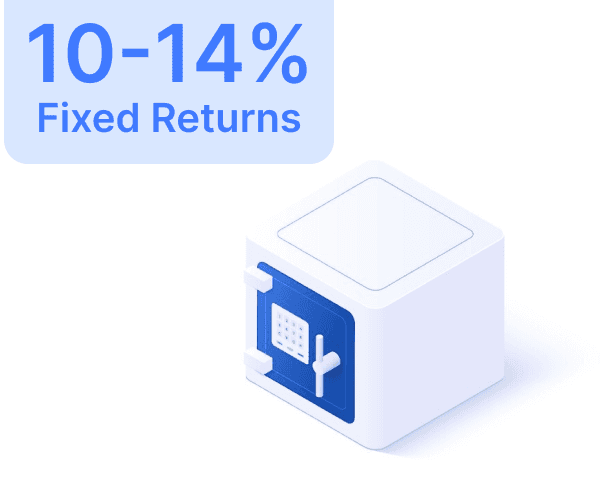Expense Ratio



Introduction
Introduction
Introduction
Introduction
The expense ratio is the annual fee charged by mutual funds to cover their operating costs. These costs include management fees, administrative expenses, advertising costs, and more. The value of the expense ratio varies based on the size of the mutual fund. Smaller funds often have higher expense ratios due to the need to allocate a greater proportion of their resources for optimal management. Conversely, larger funds have lower expense ratios relative to their total asset value.
The expense ratio is the annual fee charged by mutual funds to cover their operating costs. These costs include management fees, administrative expenses, advertising costs, and more. The value of the expense ratio varies based on the size of the mutual fund. Smaller funds often have higher expense ratios due to the need to allocate a greater proportion of their resources for optimal management. Conversely, larger funds have lower expense ratios relative to their total asset value.
The expense ratio is the annual fee charged by mutual funds to cover their operating costs. These costs include management fees, administrative expenses, advertising costs, and more. The value of the expense ratio varies based on the size of the mutual fund. Smaller funds often have higher expense ratios due to the need to allocate a greater proportion of their resources for optimal management. Conversely, larger funds have lower expense ratios relative to their total asset value.
Components of Expense Ratio
Components of Expense Ratio
Components of Expense Ratio
Components of Expense Ratio
The expense ratio consists of several charges, including:
Management Fees:
This fee compensates the fund managers and portfolio managers for their work in managing the mutual fund. Typically, this fee ranges from 0.5% to 1% of the total asset base.
Administrative Costs:
These costs cover the day-to-day operations of the mutual fund, such as maintaining investor records, processing entry and exit fees, and providing customer support.
12b-1 Fees:
This fee covers marketing and distribution expenses, including promoting the mutual fund to attract new investors.
Entry Load:
This is a fee charged when an investor joins the mutual fund. However, recent SEBI regulations have abolished the entry load in the calculation of the total expense ratio.
Exit Load:
This fee is charged when an investor exits the mutual fund. It is usually around 2-3% of the total investment and is intended to discourage early withdrawals.
Brokerage Fees:
These fees apply to regular mutual funds where transactions are processed through brokers. Direct mutual funds do not have this expense.
The expense ratio consists of several charges, including:
Management Fees:
This fee compensates the fund managers and portfolio managers for their work in managing the mutual fund. Typically, this fee ranges from 0.5% to 1% of the total asset base.
Administrative Costs:
These costs cover the day-to-day operations of the mutual fund, such as maintaining investor records, processing entry and exit fees, and providing customer support.
12b-1 Fees:
This fee covers marketing and distribution expenses, including promoting the mutual fund to attract new investors.
Entry Load:
This is a fee charged when an investor joins the mutual fund. However, recent SEBI regulations have abolished the entry load in the calculation of the total expense ratio.
Exit Load:
This fee is charged when an investor exits the mutual fund. It is usually around 2-3% of the total investment and is intended to discourage early withdrawals.
Brokerage Fees:
These fees apply to regular mutual funds where transactions are processed through brokers. Direct mutual funds do not have this expense.
The expense ratio consists of several charges, including:
Management Fees:
This fee compensates the fund managers and portfolio managers for their work in managing the mutual fund. Typically, this fee ranges from 0.5% to 1% of the total asset base.
Administrative Costs:
These costs cover the day-to-day operations of the mutual fund, such as maintaining investor records, processing entry and exit fees, and providing customer support.
12b-1 Fees:
This fee covers marketing and distribution expenses, including promoting the mutual fund to attract new investors.
Entry Load:
This is a fee charged when an investor joins the mutual fund. However, recent SEBI regulations have abolished the entry load in the calculation of the total expense ratio.
Exit Load:
This fee is charged when an investor exits the mutual fund. It is usually around 2-3% of the total investment and is intended to discourage early withdrawals.
Brokerage Fees:
These fees apply to regular mutual funds where transactions are processed through brokers. Direct mutual funds do not have this expense.
How Does the Expense Ratio Impact Fund Return?
How Does the Expense Ratio Impact Fund Return?
How Does the Expense Ratio Impact Fund Return?
How Does the Expense Ratio Impact Fund Return?
The expense ratio is deducted from the total revenue generated by a mutual fund before disbursing returns to investors. A higher expense ratio means a larger portion of returns is removed, resulting in lower returns for investors. Therefore, investors should carefully consider the expense ratio when choosing a mutual fund.
The expense ratio is deducted from the total revenue generated by a mutual fund before disbursing returns to investors. A higher expense ratio means a larger portion of returns is removed, resulting in lower returns for investors. Therefore, investors should carefully consider the expense ratio when choosing a mutual fund.
The expense ratio is deducted from the total revenue generated by a mutual fund before disbursing returns to investors. A higher expense ratio means a larger portion of returns is removed, resulting in lower returns for investors. Therefore, investors should carefully consider the expense ratio when choosing a mutual fund.
Expense Ratio Implications
Expense Ratio Implications
Expense Ratio Implications
Expense Ratio Implications
It is a misconception that a higher expense ratio indicates better management or higher profitability of a mutual fund. Funds with low expense ratios can still yield high returns if managed effectively. Conversely, funds with high expense ratios might generate substantial revenue to offset higher costs.
It is a misconception that a higher expense ratio indicates better management or higher profitability of a mutual fund. Funds with low expense ratios can still yield high returns if managed effectively. Conversely, funds with high expense ratios might generate substantial revenue to offset higher costs.
It is a misconception that a higher expense ratio indicates better management or higher profitability of a mutual fund. Funds with low expense ratios can still yield high returns if managed effectively. Conversely, funds with high expense ratios might generate substantial revenue to offset higher costs.
Expense Ratio Limit by SEBI
Expense Ratio Limit by SEBI
Expense Ratio Limit by SEBI
Expense Ratio Limit by SEBI
SEBI imposes restrictions on the expense ratios that asset management companies can charge to protect investors. For Exchange Traded Funds (ETFs) and Index Funds, the maximum total expense ratio is 2% for the initial asset base of Rs. 500 Crore, 1.75% for the next Rs. 250 Crore, and 1.5% for amounts above that.
Under Section 52 of the SEBI Mutual Fund Regulations, the maximum total expense ratio is as follows:
2.5% for the first Rs. 100 Crore of the portfolio value.
2.25% for the next Rs. 300 Crore.
2% for subsequent slabs beyond Rs. 400 Crore.
Conclusion
Understanding the expense ratio is crucial for investors as it directly impacts the returns on their investments. By analyzing the expense ratio and its components, investors can make informed decisions and choose mutual funds that align with their financial goals.
SEBI imposes restrictions on the expense ratios that asset management companies can charge to protect investors. For Exchange Traded Funds (ETFs) and Index Funds, the maximum total expense ratio is 2% for the initial asset base of Rs. 500 Crore, 1.75% for the next Rs. 250 Crore, and 1.5% for amounts above that.
Under Section 52 of the SEBI Mutual Fund Regulations, the maximum total expense ratio is as follows:
2.5% for the first Rs. 100 Crore of the portfolio value.
2.25% for the next Rs. 300 Crore.
2% for subsequent slabs beyond Rs. 400 Crore.
Conclusion
Understanding the expense ratio is crucial for investors as it directly impacts the returns on their investments. By analyzing the expense ratio and its components, investors can make informed decisions and choose mutual funds that align with their financial goals.
SEBI imposes restrictions on the expense ratios that asset management companies can charge to protect investors. For Exchange Traded Funds (ETFs) and Index Funds, the maximum total expense ratio is 2% for the initial asset base of Rs. 500 Crore, 1.75% for the next Rs. 250 Crore, and 1.5% for amounts above that.
Under Section 52 of the SEBI Mutual Fund Regulations, the maximum total expense ratio is as follows:
2.5% for the first Rs. 100 Crore of the portfolio value.
2.25% for the next Rs. 300 Crore.
2% for subsequent slabs beyond Rs. 400 Crore.
Conclusion
Understanding the expense ratio is crucial for investors as it directly impacts the returns on their investments. By analyzing the expense ratio and its components, investors can make informed decisions and choose mutual funds that align with their financial goals.
What is an expense ratio?
The expense ratio is the annual fee charged by mutual funds to cover their operating costs, including management fees, administrative expenses, and marketing costs. It is expressed as a percentage of the fund's total assets.
How does the expense ratio affect my returns?
The expense ratio is deducted from the total revenue generated by the mutual fund before disbursing returns to investors. A higher expense ratio means a larger portion of returns is taken out to cover expenses, resulting in lower net returns for investors.
What components are included in the expense ratio?
The expense ratio includes various charges such as management fees, administrative costs, 12b-1 fees (marketing and distribution expenses), entry and exit loads, and brokerage fees in the case of regular mutual funds.
Is a higher expense ratio better for fund management?
Not necessarily. A higher expense ratio does not guarantee better fund management or higher returns. Funds with lower expense ratios can also yield high returns if managed effectively. Conversely, funds with higher expense ratios might need to generate substantial revenue to offset higher costs.
What are the SEBI regulations regarding expense ratios?
SEBI has set limits on the maximum expense ratios that asset management companies can charge. For ETFs and Index Funds, the maximum is 2% for the first Rs. 500 Crore, 1.75% for the next Rs. 250 Crore, and 1.5% for amounts above that. For other mutual funds, the maximum is 2.5% for the first Rs. 100 Crore, 2.25% for the next Rs. 300 Crore, and 2% for amounts beyond Rs. 400 Crore.
What is an expense ratio?
The expense ratio is the annual fee charged by mutual funds to cover their operating costs, including management fees, administrative expenses, and marketing costs. It is expressed as a percentage of the fund's total assets.
How does the expense ratio affect my returns?
The expense ratio is deducted from the total revenue generated by the mutual fund before disbursing returns to investors. A higher expense ratio means a larger portion of returns is taken out to cover expenses, resulting in lower net returns for investors.
What components are included in the expense ratio?
The expense ratio includes various charges such as management fees, administrative costs, 12b-1 fees (marketing and distribution expenses), entry and exit loads, and brokerage fees in the case of regular mutual funds.
Is a higher expense ratio better for fund management?
Not necessarily. A higher expense ratio does not guarantee better fund management or higher returns. Funds with lower expense ratios can also yield high returns if managed effectively. Conversely, funds with higher expense ratios might need to generate substantial revenue to offset higher costs.
What are the SEBI regulations regarding expense ratios?
SEBI has set limits on the maximum expense ratios that asset management companies can charge. For ETFs and Index Funds, the maximum is 2% for the first Rs. 500 Crore, 1.75% for the next Rs. 250 Crore, and 1.5% for amounts above that. For other mutual funds, the maximum is 2.5% for the first Rs. 100 Crore, 2.25% for the next Rs. 300 Crore, and 2% for amounts beyond Rs. 400 Crore.
What is an expense ratio?
The expense ratio is the annual fee charged by mutual funds to cover their operating costs, including management fees, administrative expenses, and marketing costs. It is expressed as a percentage of the fund's total assets.
How does the expense ratio affect my returns?
The expense ratio is deducted from the total revenue generated by the mutual fund before disbursing returns to investors. A higher expense ratio means a larger portion of returns is taken out to cover expenses, resulting in lower net returns for investors.
What components are included in the expense ratio?
The expense ratio includes various charges such as management fees, administrative costs, 12b-1 fees (marketing and distribution expenses), entry and exit loads, and brokerage fees in the case of regular mutual funds.
Is a higher expense ratio better for fund management?
Not necessarily. A higher expense ratio does not guarantee better fund management or higher returns. Funds with lower expense ratios can also yield high returns if managed effectively. Conversely, funds with higher expense ratios might need to generate substantial revenue to offset higher costs.
What are the SEBI regulations regarding expense ratios?
SEBI has set limits on the maximum expense ratios that asset management companies can charge. For ETFs and Index Funds, the maximum is 2% for the first Rs. 500 Crore, 1.75% for the next Rs. 250 Crore, and 1.5% for amounts above that. For other mutual funds, the maximum is 2.5% for the first Rs. 100 Crore, 2.25% for the next Rs. 300 Crore, and 2% for amounts beyond Rs. 400 Crore.
Author

Harish Malhi
Read More 📖


Axis Bank Credit Card Net Banking
Axis Bank Credit Card Net Banking
August 5, 2024
August 5, 2024




PNB Fixed Deposit (FD) Interest Rates
PNB Fixed Deposit (FD) Interest Rates
August 5, 2024
August 5, 2024




Linking Aadhaar to Your Punjab National Bank Account
Linking Aadhaar to Your Punjab National Bank Account
August 5, 2024
August 5, 2024




PNB SIP Calculator
PNB SIP Calculator
August 5, 2024
August 5, 2024




How to Close a PNB Account Online & Offline?
How to Close a PNB Account Online & Offline?
August 5, 2024
August 5, 2024




TDS Refund - How to Claim TDS Refund
TDS Refund - How to Claim TDS Refund
August 5, 2024
August 5, 2024


View More




